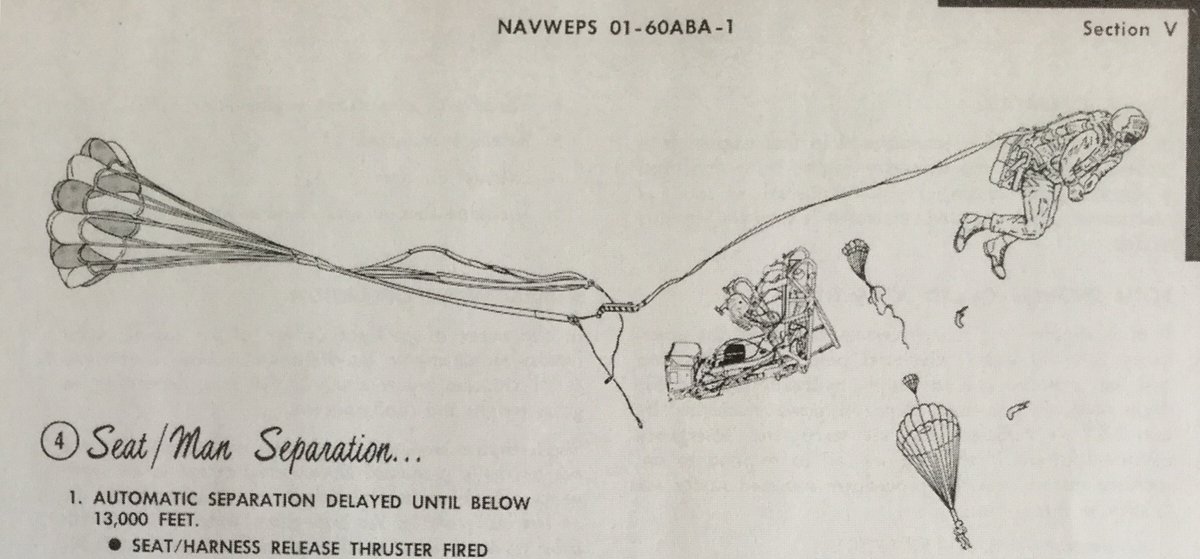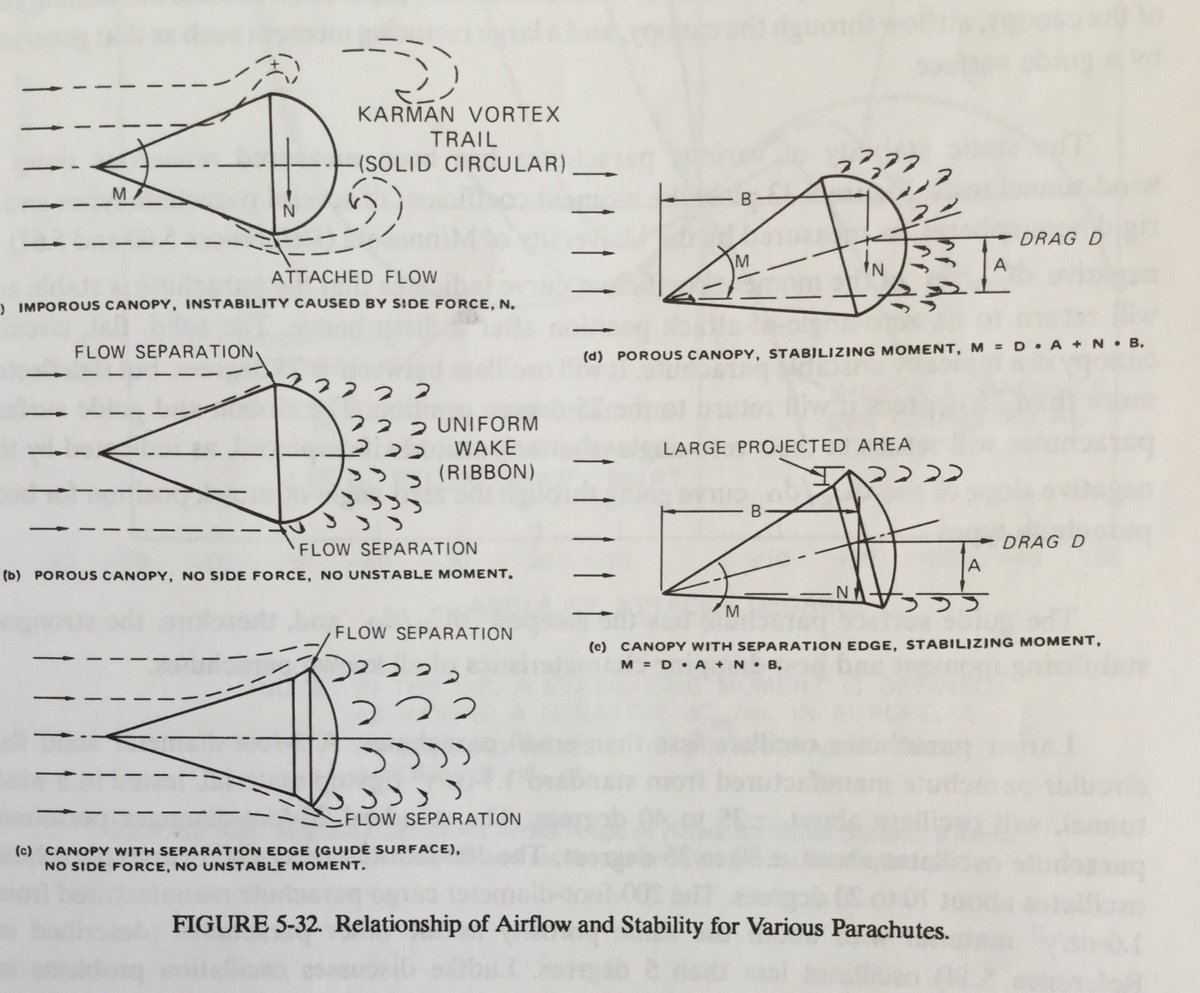
Designed & tested at McCook field in 1948 by Heinrich and Gross: the highly-stable ribless guide-surface parachute. This chute was mass-produced mostly as stabilization chutes; but there was a version aimed at landing personnel as well. 1/5. @McCookField @AFmuseum @AFResearchLab 



This design was deemed “stable”, I.e., less prone to swinging like a pendulum during descent or while decelerating payload. Per frame “e” below, it generates a stronger restoring moment whenever tilted. Figure from T. Knacke’s “Parachute recovery systems design manual”. 2/5. 

Guide-surface chutes are still used today as ejection seat drogues. They are based on a gore pattern that is easier to sew together. Top right photo from Kididis’ “Art of Drag“. Harrier jet e-seat drogue pics by @LaboPotvin . 3/5 







There was a personnel recovery version, the C-11, fielded by the USAF in the late 50’s but only on few acft (e.g. F-86D). Versus today’s C-9 canopy, their stability was better; but they were slow inflators and so unfit for low-altitudes ejections. Left pic from “Art of Drag”. 4/5 



Helmut Heinrich invented the guide-surface parachute in 1941 as a munition decelerator. The design was more complicated and included ribs sewn onto guide surface and roof panels (per gore). 5/5. More details in apps.dtic.mil/dtic/tr/fullte…
#parachute @Skydivethemag #aviationhistory
#parachute @Skydivethemag #aviationhistory

• • •
Missing some Tweet in this thread? You can try to
force a refresh



